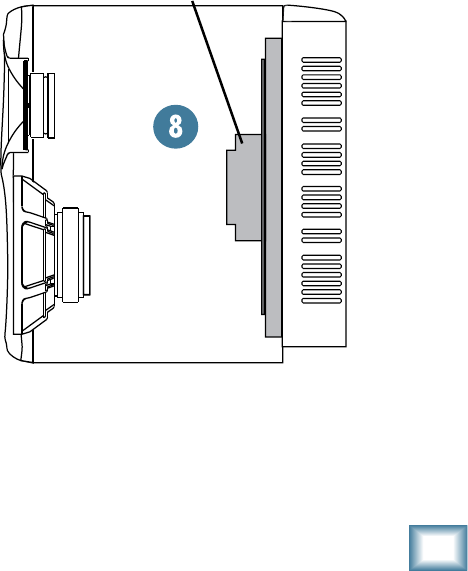
11
Owner’s Manual
Owner’s Manual
7. Mains Input
Connect the power cord to this IEC socket, and plug
the other end into your AC outlet.
• When the POWER MODE [6] switch is in the ON
position (and the front panel power switch [9] is in the
IN position), applying AC power activates the muting
circuit for about four seconds while the power supply
and internal circuitry stabilize, then the HR624 MK2
unmutes and is ready to go.
8. Passive Radiator
When you mount a loudspeaker in a box, there are two
things that you can do with the radiation from the rear of
the cone: use it to enhance the low-frequency performance
of the speaker system (bass reex system) or soak it up
(acoustic suspension system).
• A bass reex system uses the rear radiation to extend
the low-frequency response. Most systems provide holes
(ports) in the front or back of the cabinet to release the
rear wave. Sometimes the holes have tubes (ducts) in
them. The dimensions of the holes and the volume of
the cabinet work with the characteristics of the woofer
to produce low-frequency extension. These systems are
characterized by good low-frequency performance down
to the –3 dB frequency set by the design. Below this
frequency, the frequency response falls at 24 dB/octave
or more.
The HR624 MK2 is a bass reex 6th-order system.
Rather than use ports, the vent takes the form of a
passive radiator, a mass-loaded at piston coupled to
the air trapped within the enclosure. You can’t see the
passive radiator because it is located at the rear of the
cabinet, behind the power amplier assembly.
• Simple ports or ducts must have sufcient surface
area to prevent the velocity of the air within them from
exceeding 5% of the speed of sound, which keeps the
vent from becoming audible (breathing and wheezing
sounds) at high signal levels.
• This requirement for sufcient surface area creates a
design problem when using ports — nding enough
space in the enclosure for them to t.
The passive radiator replaces the port found on most
speaker systems. It offers several advantages to simple
porting:
• One primary advantage of a passive radiator is that it
can reproduce low frequencies with lower distortion
and at a higher sound pressure level (SPL) than a
simple port or duct.
• Our unique passive radiator design uses a at
diaphragm providing exceptional stiffness to the
radiating surface.
• The elliptical shape of the passive radiator takes up
nearly the entire surface area available on the rear of
the enclosure, allowing the passive radiator to move
more air than a port.
Tweeter
Woofer
Passive Radiator


















